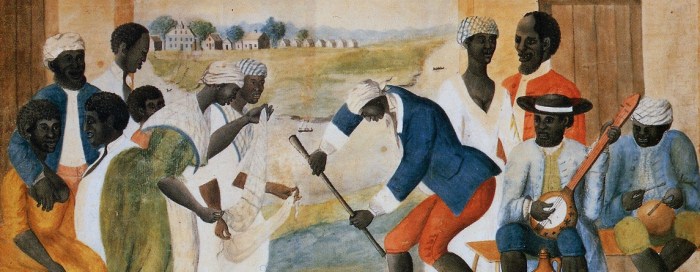The American Yawp Chapter 3 Summary provides a comprehensive overview of the transformative era following the American Revolution, encompassing the challenges and triumphs of nation-building, westward expansion, and societal change.
This chapter delves into the complexities of a young nation grappling with its identity, westward expansion’s impact on Native American tribes, the rise of industrialization, and the emergence of reform movements that shaped American society.
American Revolution’s Impact on Colonial Society
The American Revolution had a profound impact on colonial society, leading to significant social and economic changes. The war disrupted traditional social hierarchies, as many loyalists fled the colonies, while patriots gained prominence. The Revolution also accelerated the process of economic development, as the new nation sought to establish its own economic independence from Great Britain.
Economic Changes
The Revolution led to a shift away from a primarily agricultural economy towards a more diversified economy. The war created new opportunities for merchants and manufacturers, as the colonies were no longer able to rely on British imports. The war also led to the creation of a national bank and the establishment of a national currency, which helped to stabilize the economy.
Social Changes
The Revolution also had a significant impact on social relations. The war led to the abolition of slavery in the northern states, and it also weakened the institution of slavery in the South. The Revolution also led to a greater degree of social equality, as the new nation was founded on the principles of liberty and equality.
Long-Term Consequences
The American Revolution had a lasting impact on American society. The Revolution led to the creation of a new nation, the United States of America, which would go on to become a global superpower. The Revolution also led to the spread of democratic ideals around the world.
Creation of a New Nation

The American Revolution led to the creation of a new nation, the United States of America. The new nation faced a number of challenges, including the need to create a new government, establish a stable economy, and defend its independence from foreign powers.
Articles of Confederation
The first government of the United States was established under the Articles of Confederation. The Articles of Confederation created a weak central government that was unable to effectively address the needs of the new nation. The Articles of Confederation also failed to provide for a national currency or a national army.
Constitution
In 1787, the Constitutional Convention was held in Philadelphia to revise the Articles of Confederation. The Constitutional Convention produced a new constitution that created a stronger central government. The Constitution established a three-branch government, consisting of a legislative branch, an executive branch, and a judicial branch.
The Constitution also provided for a national currency and a national army.
Key Principles
The Constitution is based on a number of key principles, including the rule of law, the separation of powers, and the protection of individual rights. The rule of law means that everyone, including the government, is subject to the law.
The separation of powers means that the different branches of government have different powers and responsibilities. The protection of individual rights means that the government cannot interfere with certain basic rights, such as the right to free speech and the right to bear arms.
Westward Expansion and Native American Displacement: The American Yawp Chapter 3 Summary

Westward expansion was a major theme in American history during the 19th century. American settlers moved westward in search of land, gold, and other opportunities. Westward expansion had a significant impact on Native American tribes, who were often displaced from their traditional lands.
Routes of Westward Expansion
There were a number of major routes of westward expansion. The Oregon Trail was a popular route for settlers traveling to the Oregon Territory. The Santa Fe Trail was a popular route for settlers traveling to the Southwest. The California Trail was a popular route for settlers traveling to California.
Motivations for Westward Expansion
There were a number of factors that motivated westward expansion. One factor was the desire for land. Many settlers were farmers who were looking for new land to cultivate. Another factor was the desire for gold. Gold was discovered in California in 1848, and this led to a massive influx of settlers to the region.
A third factor was the desire for other opportunities. Westward expansion offered settlers the opportunity to start a new life and to escape the poverty and oppression of the East.
Impact on Native Americans, The american yawp chapter 3 summary
Westward expansion had a devastating impact on Native American tribes. Native Americans were often forced to give up their traditional lands, and they were often subjected to violence and discrimination. Westward expansion also led to the spread of diseases, which decimated Native American populations.
Conflicts and Treaties
There were a number of conflicts between settlers and Native Americans during the period of westward expansion. The most famous of these conflicts was the Battle of Little Bighorn, which took place in 1876. In addition to conflicts, there were also a number of treaties between settlers and Native Americans.
These treaties often resulted in the Native Americans giving up their land in exchange for reservations.
Market Revolution and Industrialization
The Market Revolution was a period of rapid economic growth and change in the United States that began in the early 19th century. The Market Revolution was fueled by a number of technological advancements, including the invention of the cotton gin, the steam engine, and the telegraph.
Technological Advancements
The cotton gin, invented by Eli Whitney in 1793, revolutionized the cotton industry. The cotton gin made it possible to quickly and easily remove the seeds from cotton, which made cotton production much more efficient. The steam engine, invented by James Watt in 1769, made it possible to power factories and other machines.
The telegraph, invented by Samuel Morse in 1837, made it possible to communicate over long distances.
Economic Transformation
The Market Revolution transformed the American economy. The growth of the cotton industry led to the development of a plantation economy in the South. The growth of factories led to the development of an industrial economy in the North. The Market Revolution also led to the growth of a national market, as goods could now be easily transported from one region of the country to another.
Social and Environmental Consequences
The Market Revolution had a number of social and environmental consequences. The growth of the plantation economy in the South led to the increase in slavery. The growth of factories in the North led to the growth of cities and the development of a working class.
The Market Revolution also led to the increased exploitation of natural resources, as forests were cleared for agriculture and factories polluted the environment.
Rise of Reform Movements
The early 19th century was a time of great social and political change in the United States. A number of reform movements emerged during this period, as people sought to address the problems created by the Market Revolution and industrialization.
Major Reform Movements
The major reform movements of the early 19th century included the abolitionist movement, the women’s rights movement, and the temperance movement.
- The abolitionist movement sought to end slavery in the United States.
- The women’s rights movement sought to secure equal rights for women.
- The temperance movement sought to prohibit the sale and consumption of alcohol.
Goals and Methods
The goals of the reform movements varied, but they all shared a common desire to improve the lives of Americans. The abolitionist movement sought to end the institution of slavery, which they believed was a moral wrong. The women’s rights movement sought to secure equal rights for women, including the right to vote and the right to own property.
The temperance movement sought to prohibit the sale and consumption of alcohol, which they believed was a major social problem.
Impact
The reform movements had a significant impact on American society and politics. The abolitionist movement played a major role in the outbreak of the Civil War. The women’s rights movement made significant progress in securing equal rights for women, including the right to vote.
The temperance movement led to the passage of the 18th Amendment to the Constitution, which prohibited the sale and consumption of alcohol.
FAQ Overview
What were the key challenges faced by the new American government?
Establishing a stable and effective government, managing westward expansion, and addressing the issue of slavery.
How did westward expansion impact Native American tribes?
It led to the displacement, conflict, and forced assimilation of Native American tribes.
What were the major technological advancements that fueled the Market Revolution?
Steam power, canals, and the cotton gin.